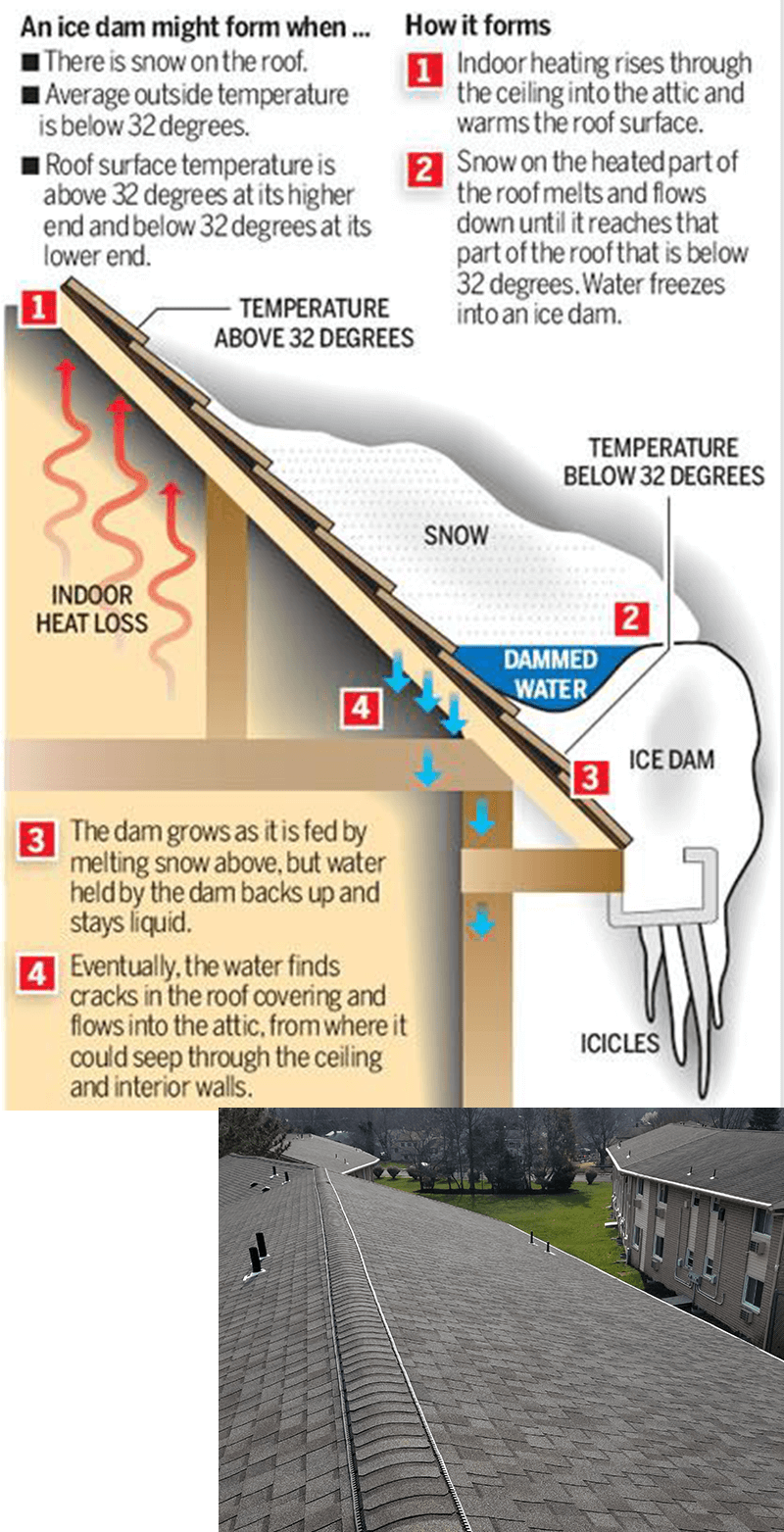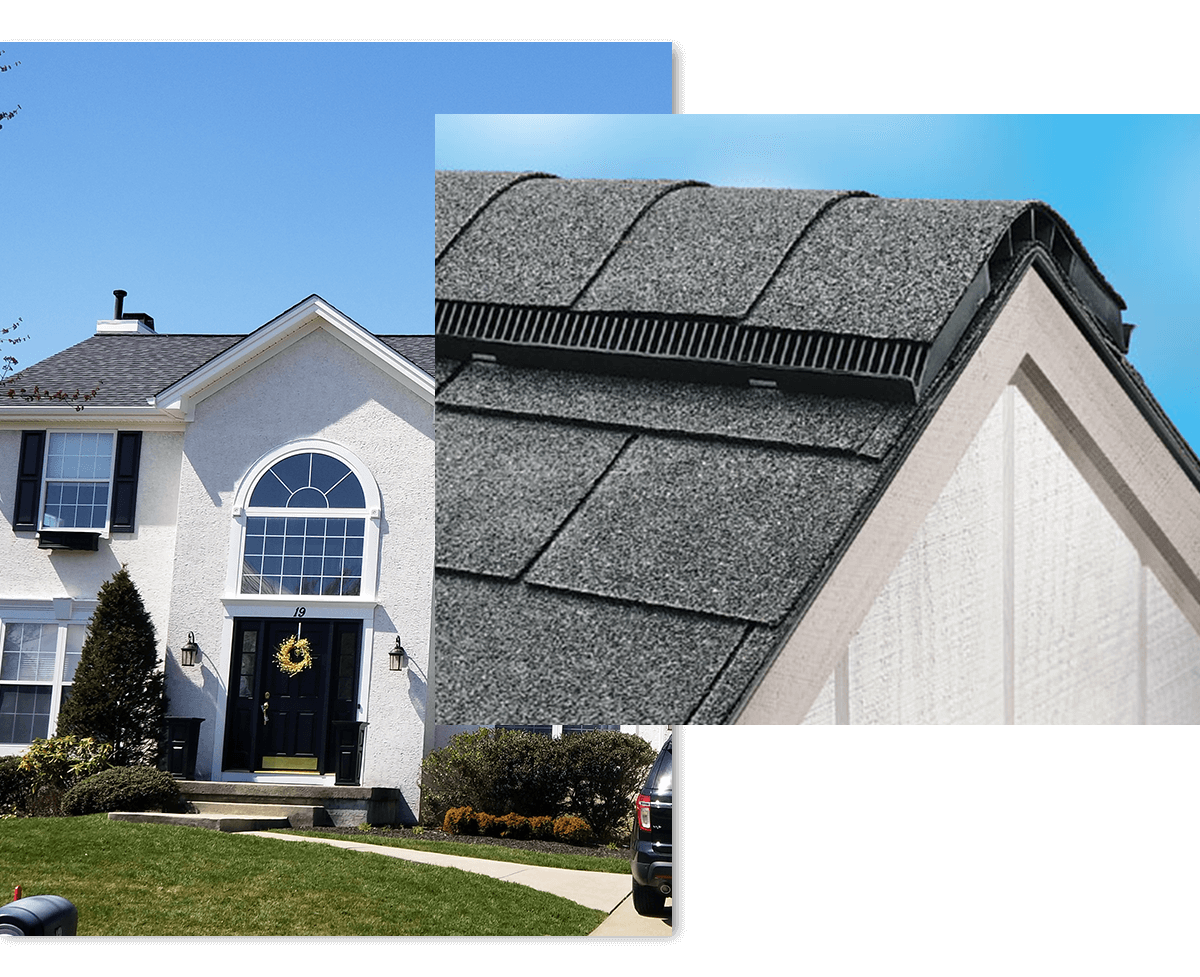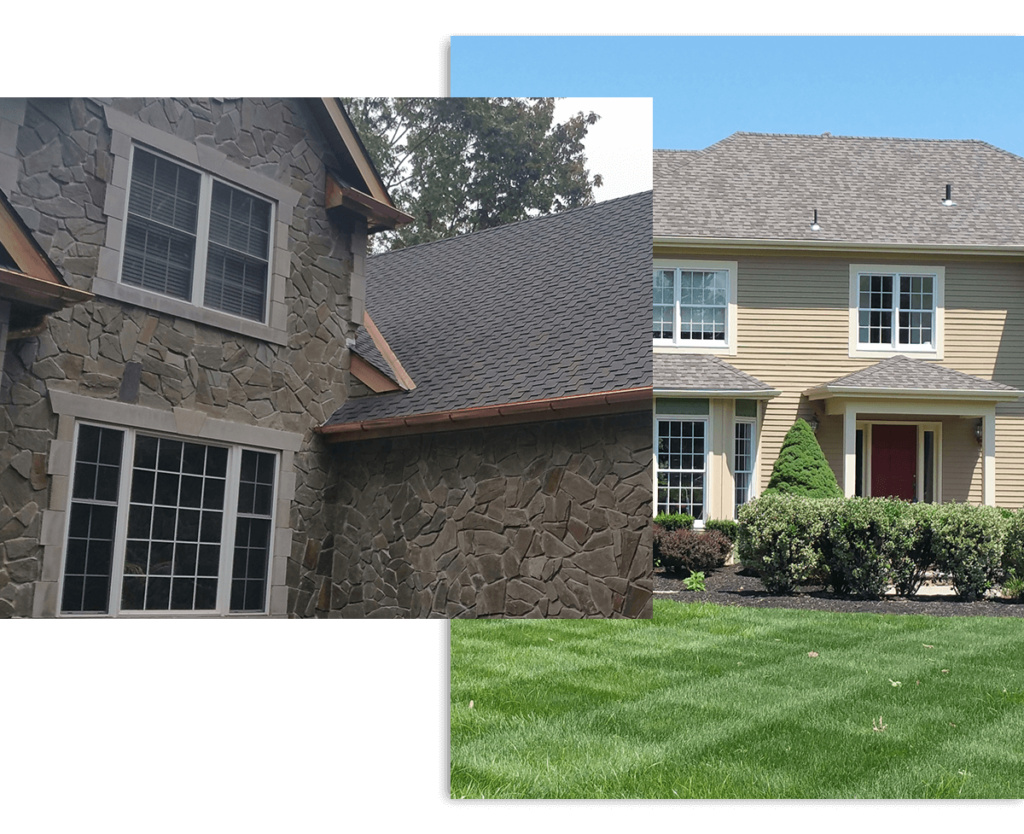Ice Dams

SIERRA CONSTRUCTION GROUP, INC
Ice Dams
Ice dams form when melting snow re-freezes at roof edges. Three things are required for an ice dam to form: snow, heat to melt the snow and cold to refreeze the melted snow into solid ice. Ice dams can form when as little as 1 or 2 inches of snow accumulates on a roof ? if the snowfall is followed by several days of sub-freezing temperatures. Ice dams develop as snow on the upper part of the roof melts. Water runs down the roof slope under the blanket of snow and refreezes into a band of ice at the roof?s edge creating a ?dam?. Additional snow-melt pools against the dam and eventually leaks into the building through the roof or roof trim.
The reason ice-dams form along the roof?s lower edge, usually above the overhang, is straight-forward. The upper roof surface (toward the ridgeline) is at a temperature that is above freezing. And the lower part of the roof surface (along the eaves) is below freezing. The upper roof surface is located directly above the living space. Heat lost from the house warms this section of the roof, melting snow in this area. During periods of sub-freezing temperature the lower regions of the roof deck remain at sub-freezing temperatures. Roof overhangs are not warmed by indoor heat-loss.
Deeper snow and colder temperatures increase the likelihood and size of ice dams. Every inch of snow that accumulates on the roof?s surface insulates the roof deck a little more, trapping more indoor heat beneath the roof deck. Frigid outdoor temperatures assure a fast and deep freeze at the eaves. So the worst ice dams usually occur when a deep snow is followed by very cold weather.
Here are a few common causes of heat loss into the attic:
Air Leakage
Insulation retards conductive heat loss, but a special effort must be made to block the flow of warm indoor air (convection) into the attic or roof area. Small holes allow significant volumes of warm indoor air to pass into attic spaces. some examples are:
- Attic hatches
- Chimneys
- Recessed or ceiling lights (especially in cathedral ceilings)
- Plumbing or electrical penetrations
- Bathroom exhaust fans
- Intersection of interior partitions and ceiling
Solutions
Ventilation
The first step that should be taken is to make sure the attic is well ventilated. The goal is to keep the attic air and the air outside the same temperature to prevent melting at the higher points on the roof. This can be accomplished by making sure that the soffits are well vented and a fully baffled ridge vent is in place. Special care must be taken to make sure that the insulation at the wall is not blocking the soffits.
Insulation
Keeping heat in the house can't be stressed enough. We recommend using R-30 or higher in the entire attic. Seal around all ceiling penetrations as well, call a professional insulation contractor for hard to access attics and when trying to insulate around recessed lights etc. Heat tends to escape at wall ceiling intersections, which are typically right above the colder soffit areas so it is important that this area is well insulated. We recommend installing rafter vents / vent baffles over this area to allow the air from the soffits to travel over the insulation.


Ice & Water shield
When installing a new roof, the use of ice and water shield along the bottom edge of the roof, in valleys and along walls is recommended. Although it is still possible for ice to back up beyond the underlayment this does provide much additional protection.
Heat Cables
When all of the above options have been exhausted or special circumstances prevent one of the above then we recommend the use of a commercial heat cable. Cables will keep the lower part of the roof from freezing. Have a professional roofer install and use only when needed to save on electric.
For a free estimate contact us at (856)596-3003 or email us at [email protected]